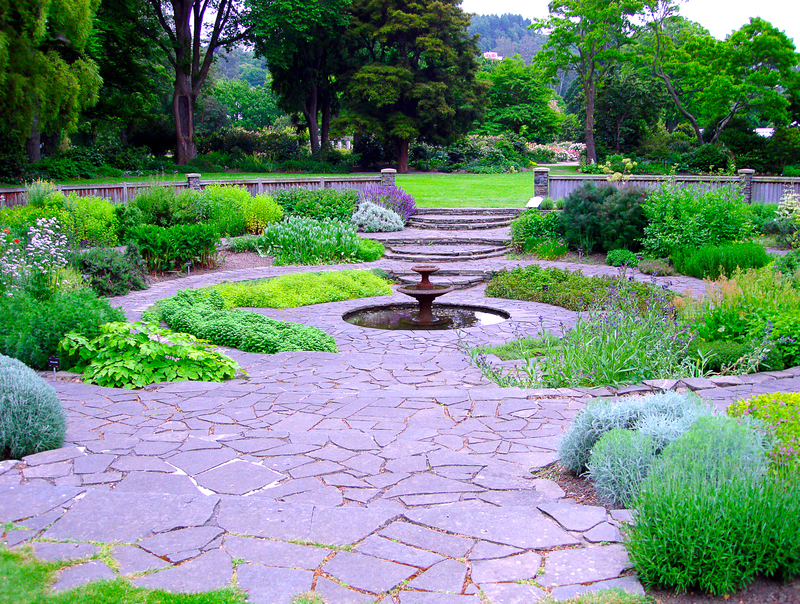Discovering the Benefits of Vertical Gardening
Posted on 01/06/2025
Discovering the Benefits of Vertical Gardening
Imagine transforming even the smallest outdoor or indoor spaces into lush, green sanctuaries filled with flowers, herbs, and vegetables. This is the magic of vertical gardening! Whether on a city balcony or a suburban backyard fence, vertical gardens are gaining popularity among urban dwellers, design enthusiasts, and environmentalists alike.

What is Vertical Gardening?
Vertical gardening is the practice of growing plants upward rather than outward. Instead of traditional garden plots on the ground, you use trellises, wall-mounted planters, hanging pots, and other structures to create a living wall or a tiered garden. It's an innovative way to maximize your available space while providing numerous ecological, aesthetic, and health benefits.
Key Features of Vertical Gardening
- Space-saving design: Grow more in less area, making these gardens ideal for small apartments, balconies, or patios.
- Versatile plant options: Grow vegetables, herbs, flowers, succulents, and even small fruiting plants vertically.
- Functional and decorative: Vertical gardens can be used as privacy walls, windbreaks, or simply as eye-catching decor.
Why Choose Vertical Gardening? Exploring the Core Advantages
Vertical garden benefits go beyond mere aesthetics. Urban gardeners, health-conscious individuals, and anyone interested in sustainability can discover the numerous perks of this upward-growing trend.
1. Maximizing Small Spaces
One of the biggest advantages of vertical gardening is its space efficiency. For city residents, lack of outdoor gardening space is a common limitation. By taking your garden upward, vertical planting unlocks unused vertical surfaces--balcony railings, walls, fences--for productive greenery.
- Ideal for balconies and patios: Perfect where ground space is at a premium.
- Clever use of fences and walls: Fences become green backdrops, walls transform into living tapestries.
- Expandable designs: Vertical gardens can be easily enlarged by stacking additional layers or adding planters as needed.
2. Improving Air Quality
Vertical garden systems act as natural air purifiers. Plants are known to absorb toxins, release oxygen, and improve the overall quality of the surrounding air. In urban environments, this can mean cleaner, fresher air right at your doorstep--or even indoors!
- Reduces levels of indoor pollutants like formaldehyde and benzene.
- Promotes better respiratory health for occupants.
- Mitigates noise pollution (large living walls can act as sound barriers).
3. Enhancing Urban Aesthetics
A row of vibrant greenery or a cascading wall of blossoms uplifts the look and feel of any space. Vertical gardens are a growing trend in architectural design, providing beautiful, ever-changing art installations that evolve with the seasons.
- Transforms dull spaces into vivid, inspiring environments.
- Boosts property value and curb appeal.
- Customizable plant selections create unique color schemes and textures.
4. Increased Food Production
Vertical vegetable gardening is a boon for urban homesteaders and foodies. Growing your own fresh herbs, salad greens, strawberries, or even compact tomatoes is possible with the right arrangement of planters and climbing supports.
- Yields more crops per square foot compared to traditional gardens.
- Enables gardeners to experiment with rare or heirloom varieties.
- Pesticide-free, organic produce within arm's reach.
5. Water Efficiency
Vertical gardens often use less water than horizontal beds. Clever irrigation systems such as drip lines or recycled "trickle-down" watering enable moisture to reach all levels efficiently, minimizing waste.
- Lowers the risk of overwatering and waterlogging.
- Reduces evaporation compared to raised beds or plots.
- Collects and filters rainwater for sustainable gardening.
Getting Started with Vertical Gardening
Choosing the Right Location
Not all walls, fences, or railings are equally suited for vertical gardening. Look for locations with good sun exposure (most vegetables and many flowering plants will need at least 4-6 hours a day). Consider wind protection and access to water. For indoor vertical gardens, look for bright windowsills, kitchen walls, or even unused corners.
Selecting Plants for Vertical Gardens
The best vertical garden plants are those that suit your light and climate conditions and have a tendency to grow upward or cascade naturally. Here are some popular choices:
- Herbs: Basil, chives, mint, oregano, thyme, and parsley thrive in small containers and vertical planters.
- Leafy greens: Lettuce, spinach, arugula, and kale yield well in wall-mounted pockets or towers.
- Flowers: Petunias, nasturtiums, violas, lobelia, and trailing begonias provide vibrant blooms and scents.
- Vegetables: Cherry tomatoes, pole beans, peas, peppers, and cucumbers can climb trellises or hang elegantly from pots.
- Succulents and ferns: Ideal for low-maintenance, drought-tolerant vertical displays.
Selecting a Vertical Gardening System
There are numerous ways to incorporate vertical gardening techniques into your home or outdoor space. Some popular systems include:
- Living walls: Modular panels or pockets attached to a support structure, allowing for elaborate vertical plant displays.
- Trellises and arbors: Classic supports for climbing plants such as beans, peas, and flowering vines.
- Stacked planters: Tiered pots, towers, or repurposed shelves create levels for multiple plant varieties.
- Hanging gardens: Baskets, upcycled bottles, or grow bags suspended from railings, ceilings, or hooks.
Step-by-Step Guide to Creating Your Vertical Garden
Step 1: Choose a Vertical Structure
Depending on your available space and preferred look, select a sturdy structure. This could be a commercial living wall system, a wooden trellis, or a DIY pallet planter.
Step 2: Prep Your Materials
- Gather planters, potting mix, seeds or seedlings, and irrigation supplies.
- Secure safe mounting hardware for walls or fences--ensure weight distribution is safe!
Step 3: Install the Vertical Garden
- Mount or place your structure securely.
- Arrange planters at appropriate heights for easy watering and sunlight access.
- Install an irrigation system if desired (a drip hose or self-watering reservoirs).
Step 4: Plant and Maintain
- Select compatible plant varieties for each tier based on light needs and growth habit.
- Water regularly, but avoid overwatering. Vertical gardens generally require less water, but monitor as needed.
- Fertilize periodically and trim plants to encourage lush, compact growth.
Common Challenges and How to Overcome Them
- Watering: Vertical gardens can dry out faster. Use self-watering pots, hydroponic systems, or drip irrigation for consistency.
- Weight: Wet soil is heavy. Ensure mounting hardware and walls are strong enough for fully loaded planters.
- Sunlight: Top tiers may shade lower plants. Choose species with similar light needs per section or rotate position.
- Pests: Dense plantings can attract bugs. Use organic pest control and ensure good airflow.
Sustainable Living: Vertical Gardening for the Future
As global cities grow denser and green space dwindles, the importance of sustainable, productive, and beautiful spaces rises. Vertical gardens are an elegant, eco-friendly solution for homes, offices, schools, and commercial buildings.
- Reduces heat island effects: Green walls cool structures in summer and insulate in winter.
- Increases biodiversity: Attracts pollinators such as bees, butterflies, and beneficial insects even in urban settings.
- Decreases carbon footprint: Local food production cuts down on transport emissions and packaging waste.
The Social Benefits of Vertical Gardens
- Community engagement: Shared green spaces on rooftops or building exteriors foster community bonds and cooperation.
- Therapeutic impact: Gardening is proven to reduce stress and improve mental well-being--a vertical garden adds tranquility to homes and workplaces.
- Education: Schools use vertical gardens as hands-on tools, teaching students about ecology, nutrition, and responsibility.

Inspiration: Creative Vertical Gardening Ideas
- Herb walls in the kitchen: Fresh basil, parsley, and thyme within easy reach for cooking.
- Palette gardens: Upcycle wooden palettes into tiered flower or vegetable gardens.
- Succulent picture frames: Living art installations for indoor or outdoor walls.
- Hanging bottles: Reuse plastic or glass bottles as creative planters for leafy greens or flowers.
Conclusion: Embrace the Vertical Green Revolution
Vertical gardening is more than a trend--it's a sustainable, rewarding approach that brings abundant benefits to urban and rural environments alike. Whether you're seeking to maximize a tiny balcony, enhance your home's beauty, or grow your own food, vertical gardening offers flexible and creative solutions for every lifestyle.
With many advantages--including space efficiency, air purification, food production, and improved aesthetics--it's no wonder that vertical gardening is becoming an integral part of modern, eco-conscious living.
Now is the perfect time to start your vertical garden--one beautiful, upward-growing plant at a time!

